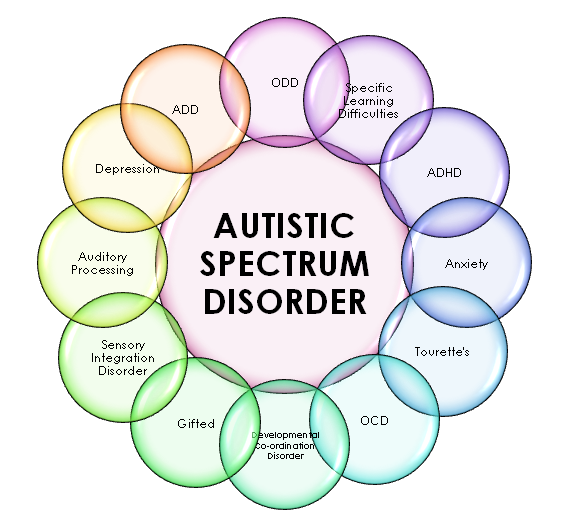-
Новости
- ИССЛЕДОВАТЬ
-
Страницы
-
Группы
-
Мероприятия
-
Reels
-
Статьи пользователей
-
Offers
-
Jobs
Understanding ASD: Exploring the Full Form, Meaning, and Medical Insights

In today’s world, increased awareness and understanding of various neurodevelopmental conditions are crucial for inclusive societies. One such condition that has gained significant attention in recent years is ASD. If you've ever wondered about the ASD full form, its implications, and how it is understood in the medical field, this article provides a detailed overview.
What is ASD?
The term ASD stands for Autism Spectrum Disorder. It is a complex neurodevelopmental condition that affects communication, behavior, and social interaction. The word “spectrum” is important, as it signifies the wide range of challenges and strengths that individuals with autism spectrum disorder can experience.
ASD Full Form in Medical Context
In the medical field, the ASD full form in medical terminology is Autism Spectrum Disorder. It is classified under the category of neurodevelopmental disorders in the Diagnostic and Statistical Manual of Mental Disorders, Fifth Edition (DSM-5), published by the American Psychiatric Association.
This classification underscores that ASD is not a single disorder but a spectrum of closely related conditions that share core symptoms. Medical professionals use this term when diagnosing and planning treatment for individuals who exhibit signs consistent with the disorder.
Historical Perspective of ASD
Understanding the evolution of the term ASD helps in grasping its modern application. Earlier, conditions like Asperger’s Syndrome, Pervasive Developmental Disorder-Not Otherwise Specified (PDD-NOS), and Autistic Disorder were considered separate diagnoses. However, the DSM-5 merged these under the umbrella of Autism Spectrum Disorder or ASD, to better represent the range of symptoms and their severity.
Common Signs and Symptoms of Autism Spectrum Disorder
People with autism spectrum disorder exhibit a variety of behavioral and developmental differences. Though symptoms can vary widely, common indicators include:
-
Difficulty in social interaction
-
Challenges in communication (both verbal and non-verbal)
-
Repetitive behaviors or interests
-
Strong preference for routines
-
Sensitivity to sensory inputs (sound, light, touch)
It is important to note that every individual with ASD is unique, and while some may need significant support, others can live independently and lead successful lives.
Diagnosis of ASD
Diagnosis of ASD usually begins in early childhood. Pediatricians and child psychologists play a vital role in identifying the signs. Early diagnosis and intervention can make a significant difference in a child’s development.
There are no specific medical tests to diagnose ASD. Instead, professionals rely on behavioral assessments, developmental history, and sometimes genetic testing to rule out other conditions. Tools such as the Autism Diagnostic Observation Schedule (ADOS) and Autism Diagnostic Interview-Revised (ADI-R) are often used.
Causes and Risk Factors of ASD
The exact causes of autism spectrum disorder remain unknown, though research indicates that a combination of genetic and environmental factors plays a role.
Some known risk factors include:
-
Genetic mutations or syndromes (e.g., Fragile X syndrome)
-
Having an immediate family member with ASD
-
Advanced parental age at time of conception
-
Premature birth or low birth weight
-
Prenatal exposure to certain substances or medications
It’s important to understand that ASD is not caused by vaccines — a misconception that has been widely debunked by scientific research.
Treatment Options for ASD
While there is no cure for autism spectrum disorder, various therapies can help manage symptoms and improve quality of life.
Common treatments include:
-
Behavioral therapy (e.g., Applied Behavior Analysis - ABA)
-
Speech and language therapy
-
Occupational therapy
-
Social skills training
-
Educational interventions
In some cases, medications may be prescribed to manage specific symptoms such as anxiety, depression, or hyperactivity.
A personalized, multidisciplinary approach is usually the most effective. Early intervention is key in supporting developmental progress in children with ASD.
Living with ASD
Many individuals with ASD go on to lead fulfilling lives. With the right support, they can excel in academics, careers, and personal relationships. The growing awareness and acceptance of neurodiversity in society have helped reduce stigma and promote inclusion.
Educational Support
Schools are increasingly equipped to support students with autism spectrum disorder through Individualized Education Programs (IEPs), special education services, and classroom aides.
Employment Opportunities
Many adults with ASD bring unique skills and perspectives to the workplace. Companies in the tech, design, and creative industries have embraced neurodiverse hiring practices.
The Role of Society
Raising awareness about ASD is crucial for building a more compassionate and inclusive world. Community programs, public health campaigns, and educational seminars can help dispel myths and promote understanding.
Families of individuals with ASD often benefit from support networks, counseling, and respite care. Organizations such as Autism Speaks, The Autism Society, and local support groups offer valuable resources.
Key Takeaways
-
The ASD full form is Autism Spectrum Disorder.
-
The ASD full form in medical use also refers to Autism Spectrum Disorder, classified under neurodevelopmental disorders.
-
Symptoms can vary widely but often include communication difficulties, repetitive behaviors, and social challenges.
-
Early diagnosis and intervention are critical.
-
There is no cure, but various therapies can significantly improve quality of life.
-
With support, individuals with ASD can thrive in education, employment, and relationships.
-
Public awareness and inclusive policies are essential for supporting people with autism spectrum disorder.
Final Thoughts
Understanding what ASD means, its full form, and how it impacts individuals is a vital step toward acceptance and support. As society becomes more educated on conditions like autism spectrum disorder, we move closer to a future where everyone, regardless of neurological differences, has the opportunity to succeed and be understood.
- Art
- Causes
- Crafts
- Dance
- Drinks
- Film
- Fitness
- Food
- Игры
- Gardening
- Health
- Главная
- Literature
- Music
- Networking
- Другое
- Party
- Religion
- Shopping
- Sports
- Theater
- Wellness
